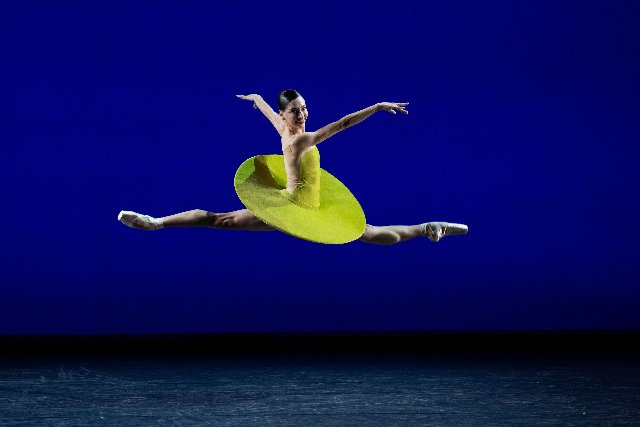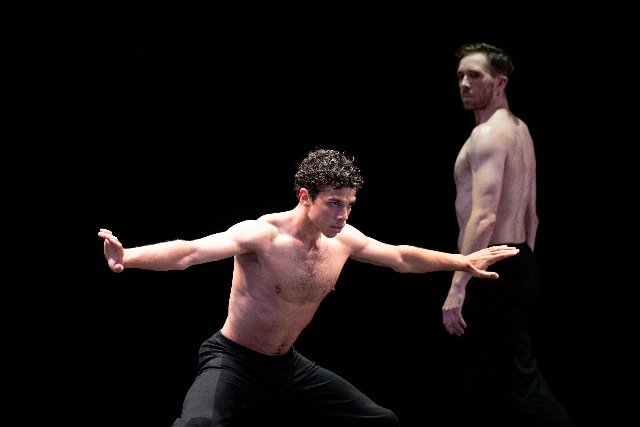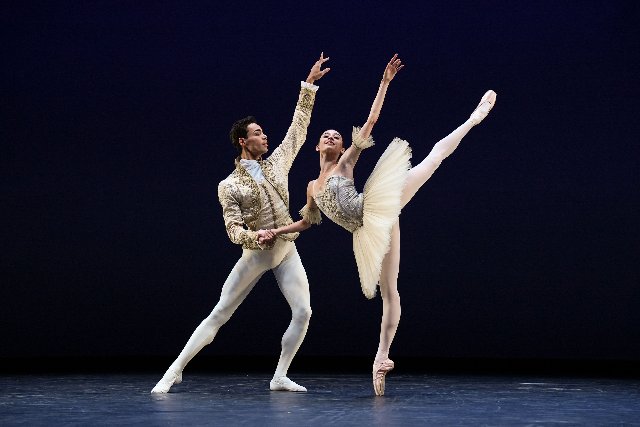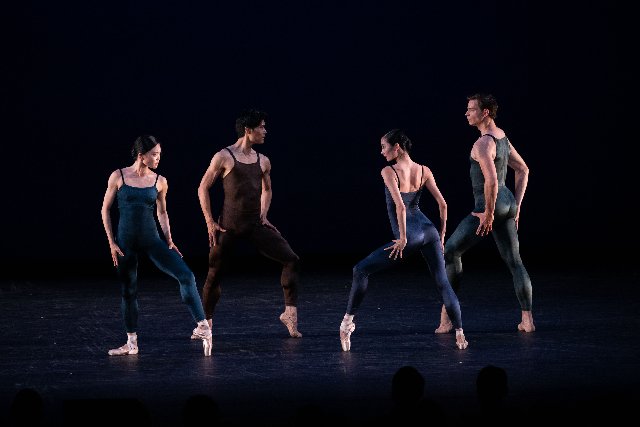Dutch National Ballet
World Class Company at Jacob's Pillow
By: Charles Giuliano - Jul 18, 2023
Founded 62 years ago, The Dutch National Ballet, is regarded as an elite company dedicated to that traditional genre. With some 130 performances a year, at home in Amsterdam with a resident orchestra and then on tour, the troup honors the canon of 19th century narrative dances.
But that’s not what was presented in the DNB’s first Jacob’s Pillow appearance to capacity audiences. While schooled in traditional ballet, the company is notable for having expanded that discipline with bright, complex, demanding contemporary dances that raise the barre: formidable execution is rendered with effortless power and athleticism, leavened with a soupcon of wit.
The driving force of this approach is the 90 year-old choreographer Hans van Manen. The creator of more than a hundred dances, he has been singular in his knack for making traditional ballets with fresh nuances. In a program of five dances, two represented the vision of this grand master of ballet.
During her opening remarks, artistic director Pamela Tatge alluded to a special treat, a gift in the program to Pillow audiences. A third piece, Solo by van Manen, had been added but was not included in the printed program. It proved to be one of the evening’s most pleasing pieces. Performed by three men, Solo was a compendium of the company’s “greatest hits.”
Each spellbinding dance explored how traditions that date to the French court can elide with agendas of the modern world. Tatge informed us that the performance would end with a “masterpiece” — van Manen’s “5 Tangos,” which is set to music by Astor Piazzola. It is the choreographer’s most globally produced work.
The opening selection for van Manen’s “Variations for Two Couples” (2012) is performed by dancers in dark unitards. Its four sections end with Astor Piazzolla’s “Melodia en la menor (Canto de Octobre),” preceded by music by Benjamin Britten, Einojuhani Rautavaara, and Stevan Kovacs Tickmayer.
The piece explores various aspects of partnering. Both couples on stage perform duets and then peel off for solos. A distinctive scene in the dance features the women suspended in the air by their partners. The women glide and slide about the stage, suggesting a state of timelessness.
Wubkje Kuindersma’s pas de deux “Two and Only” (2018) felt more contemporary than classical. A dance for male lovers, it is set to songs by singer-songwriter Michael J. Benjamin. The throaty, country-flavored vocal treatment of these somber, introspective love songs evoke comparisons to Johnny Cash.
Performed by two bare-chested men, the dance dramatizes the passion, anguish, parting, and regret felt by any lovers. For much of the piece, the performers are seated, the course of their relationship expressed through restrained touching, fending off, and embracing.
William Forsythe’s “The Vertiginous Thrill of Exactitude” (1996) both celebrates classical ballet and winks at it. The bright, colorful costumes by Stephen Galloway alert us that we are in for an exercise in fun. Three women, wearing pop-colored, stiff tutus, come off as comical rather than traditional. The two men wear trunks and tee shirts with bare backs.
Set to Schubert’s “Allegro Vivace” from Symphony No. 9 in C Major, the choreography of Forsythe’s iconoclastic excursion paces the dancers at dizzying warp speed. The classical movements are so accelerated that it takes a quick eye to catch every the playful eccentricities. It’s meant to be, and is, a disorientating experience: the dancers smile at us provocatively, men are cut loose with spectacular leaps.
The “bonus,” van Manen’s “Solo” is set to a quick-paced solo violin. The action is spurred by playful competition. Each dancer is given time to ‘wow’ the audience, capping his turn with a clever exit accented by a flourish. Via broad mugging gestures and expressions, the audience is encouraged by the dancers to judge “the contest.” In the end, we were all winners.
While the programming vividly demonstrated how ballet has evolved, “Grand Pas Classique a pas de deux” (from 1949 by Russian choreographer Victor Gsovsky) demonstrated the company’s deep respect for tradition. It featured a “prince” and “princess” both in white. He wore tights and an ornamented jacket while she appeared in a traditional tutu.
The dance is described by critics as one of the most rigorous and challenging in the modern repertoire. The piece seems excerpted from an iconic ballet. The “prince” supported the “princess” through sustained cycles of flawlessly performed pirouettes and arabesques. His solo presented many of the virtuoso, gravity-defying leaps that are signatures of the greatest dancers.
In 2016, Che Malamboso, an all-male company, brought a program filled with contemporary and traditional tangos to Jacob’s Pillow. Nothing of that performance, however, prepared audience members for van Manen’s “Five Tangos” (1977). The backstory: van Manen met the Argentine composer Astor Piazzolla at a dinner party. The choreographer became intoxicated by the exotic tango music of the bandoneon, a button accordion. The instrument’s sound resembles a harmonica, and in this piece it is accompanied by drum and a subdued violin.
The five-part dance, which delightfully deconstructs the tango, calls for a combinations of 14 dancers. Rudolph Valentino stereotypes are banished: there is little to no macho-charged physical interaction, no wiping the floor with a female partner.
The company’s principal dancers, Qian Liu and Young Gyu Choi, were paired among the twelve corps dancers. The women wore short black dresses with red accents and hair ornaments designed by Jean-Paul Vroom. The men wore black shirts and pants.
Overall, the performance focuses on a stripped down, minimalist austerity, though there are well timed emotional outbursts. At first, there were evolving combinations and pairings, that eventually broke open with a scorching duet for men followed by a rather shattering solo by Young Gyu Choi.
The final statement was a reversal of the very essence of tango. Qian Liu appeared at center stage, clearly dominating the line of six men backing her. Striking dominating stances and movements, she reduced the men around her to boy toys, to be played with at her whim. van Manen stands tango on its head.
The Dutch National Ballet’s first visit to Jacob’s Pillow offered a deep immersion in classical ballet, past and present. On every level it belongs to the top tier of dance in the Berkshires.
Reposted courtesy of Boston's Arts Fuse.




